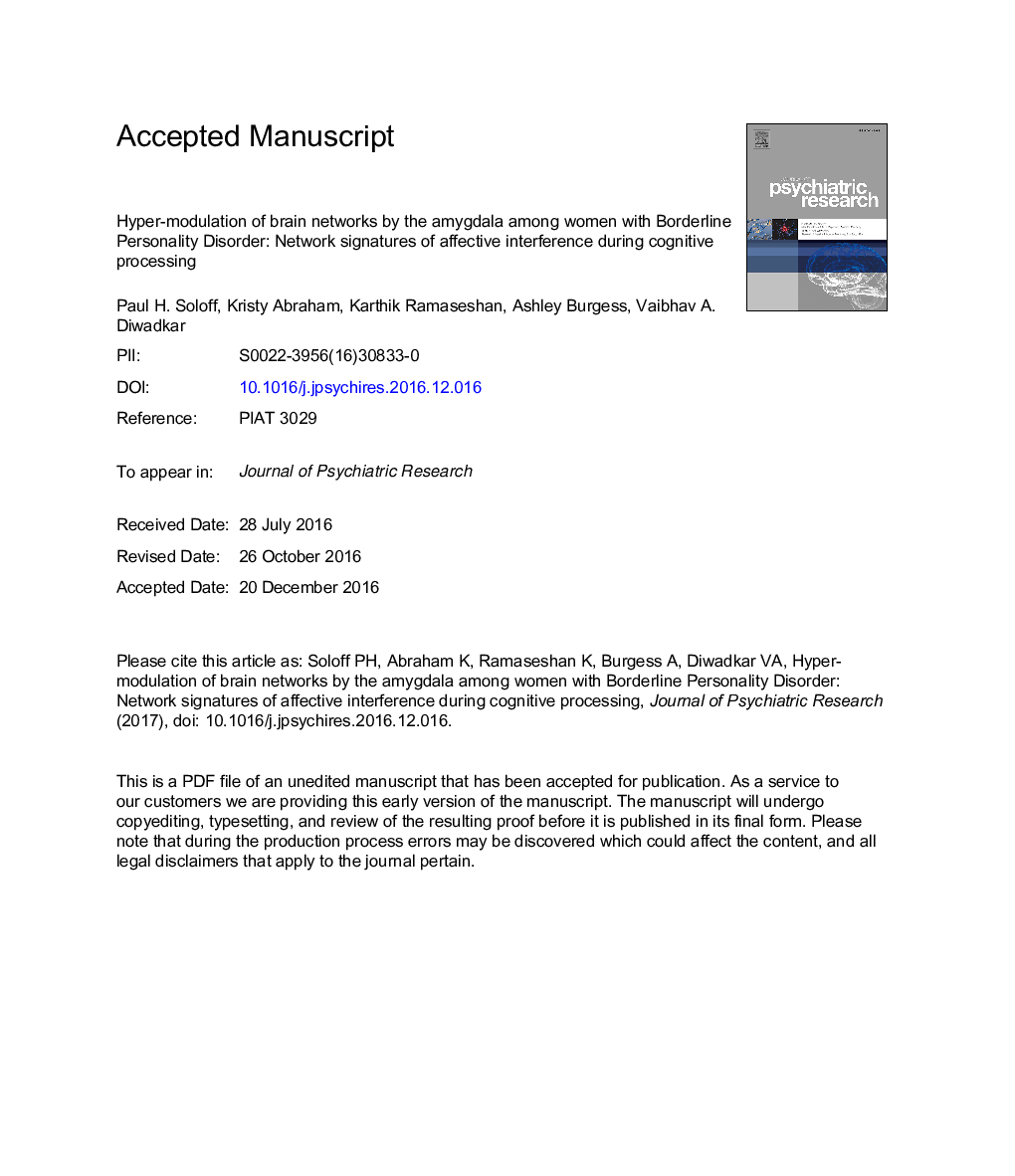| کد مقاله | کد نشریه | سال انتشار | مقاله انگلیسی | نسخه تمام متن |
|---|---|---|---|---|
| 4932092 | 1433305 | 2017 | 33 صفحه PDF | دانلود رایگان |
عنوان انگلیسی مقاله ISI
Hyper-modulation of brain networks by the amygdala among women with Borderline Personality Disorder: Network signatures of affective interference during cognitive processing
ترجمه فارسی عنوان
بیش از حد مدولاسیون شبکه های مغز توسط آمیگدال در زنان مبتلا به اختلال شخصیت مرزی: امضای شبکه تداخل عاطفی در طول پردازش شناختی
دانلود مقاله + سفارش ترجمه
دانلود مقاله ISI انگلیسی
رایگان برای ایرانیان
کلمات کلیدی
موضوعات مرتبط
علوم زیستی و بیوفناوری
علم عصب شناسی
روانپزشکی بیولوژیکی
چکیده انگلیسی
Emotion dysregulation is a core characteristic of patients with Borderline Personality Disorder (BPD), and is often attributed to an imbalance in fronto-limbic network function. Hyperarousal of amygdala, especially in response to negative affective stimuli, results in affective interference with cognitive processing of executive functions. Clinical consequences include the impulsive-aggression, suicidal and self-injurious behaviors which characterize BPD. Dysfunctional interactions between amygdala and its network targets have not been well characterized during cognitive task performance. Using psychophysiological interaction analysis (PPI), we mapped network profiles of amygdala interaction with key regulatory regions during a Go No-Go task, modified to use negative, positive and neutral Ekman faces as targets. Fifty-six female subjects, 31 BPD and 25 healthy controls (HC), completed the affectively valenced Go No-Go task during fMRI scanning. In the negative affective condition, the amygdala exerted greater modulation of its targets in BPD compared to HC subjects in Rt. OFC, Rt. dACC, Rt. Parietal cortex, Rt. Basal Ganglia, and Rt. dlPFC. Across the spectrum of affective contrasts, hypermodulation in BPD subjects observed the following ordering: Negative > Neutral > Positive contrast. The amygdala seed exerted modulatory effects on specific target regions important in processing response inhibition and motor impulsiveness. The vulnerability of BPD subjects to affective interference with impulse control may be due to specific network dysfunction related to amygdala hyper-arousal and its effects on prefrontal regulatory regions such as the OFC and dACC.
ناشر
Database: Elsevier - ScienceDirect (ساینس دایرکت)
Journal: Journal of Psychiatric Research - Volume 88, May 2017, Pages 56-63
Journal: Journal of Psychiatric Research - Volume 88, May 2017, Pages 56-63
نویسندگان
Paul H. Soloff, Kristy Abraham, Karthik Ramaseshan, Ashley Burgess, Vaibhav A. Diwadkar,
